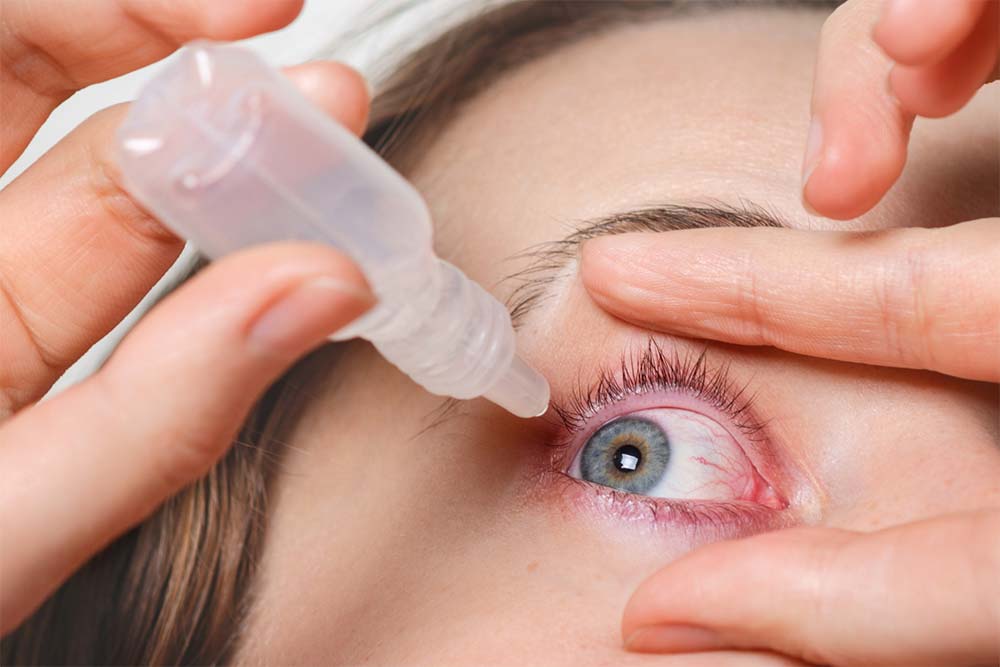Dry eye can be an uncomfortable condition that affects millions of people. The symptoms of dry eye include burning, itching, excessive tearing, redness, and discomfort. Dry eye is usually caused by inflammation of the ocular surface, which leads to a lack of lubrication. Dry eye can be classified as one of two different types: mild and severe.
Dry eye is a common eye problem, especially in older women. Fortunately, there are many treatments available that can help you combat dry eye. But some people find that their dry eye symptoms are linked to other health issues. It’s even possible for dry eye symptoms to worsen or disappear altogether if the underlying cause is addressed. That’s why it’s important to know what triggers dry eye, so you can work with other treatment methods to alleviate your symptoms.
Here are things that might trigger your dry eyes
Weather
It’s common knowledge that fluctuating temperature, humidity, and air quality can all cause dry eye symptoms. But did you know that these common triggers can also be responsible for dry eye symptoms?
Dry eyes can have quite a few causes that can vary from person to person. Some are more serious than others. Weather is a common dry eye trigger. Knowing what the weather is doing can greatly improve the comfort you feel.
As the weather cools down, many people experience a change in the quality of their eye and vision care. Dry eye is an issue that millions of people across the country deal with daily. A dry eye is a condition in which the eye does not produce enough tears to lubricate and nourish the eye. Without proper lubrication, the eyes are more vulnerable to infection, injury, and clouded vision.
Pollen or other allergens
A handful of things can contribute to dry eye, including hormones, medications, and misalignment. But did you know that particles in the air can also trigger dry eye symptoms? Spring is finally here, and that means allergy season is in full swing. As the trees begin to blossom, pollen and other allergens start to spread through the air. When pollen is in the air, it affects a lot of people. Dry eye is one of the most common issues caused by allergens. Dust, pollen, and other environmental allergens can clog up our tear ducts and increase inflammation.
Smoke and other irritants exposure
There are many common dry eye triggers you can avoid. A number of factors often cause dry eye, but one of the most prevalent triggers is exposure to smoke and other irritants. Careful management of your exposure to these irritants, as well as avoiding them altogether whenever possible, can significantly reduce your chances of developing dry eye symptoms. Many dry eye symptoms can be triggered by exposure to these irritants, which irritate your eyes and cause them to produce fewer tears, which can lead to dry eyes.
Using contact lenses
The contact lens starts out perfectly hydrated, but over time the water evaporates. The eye is weakened by dehydration. The lens may tear, break, or fall out. Dry eye conditions are so common that 1 out of 5 people in the US have problems sleeping or waking due to it. The symptoms include constant itching, burning, and redness. The condition is treatable with over-the-counter eye drops, but they can no longer relieve discomfort over time. You can check out clinical trials at Power if you’re looking for additional treatment options for dry eyes.
Vitamin A deficiency
Your eyes are an important part of your overall body health. They allow you to see, enjoy the world around you, and allow you to interact with others with ease. Unfortunately, the eyes are also susceptible to illness and injury, and one of the most common problems that cause dry eyes is a vitamin A deficiency.
Therefore, it’s important to provide your eyes with nutrients, including Vitamin A, so you can maintain healthy eyes and even possibly prevent eye conditions. Vitamin A helps keep your eyes healthy and can also help treat dry eyes.
Here are foods you can add to your diet with vitamin A.
-carrots
-sweet
-potatoes
-kale
-broccoli
-spinach
-cantaloupe
-mangoes
Medications such as antihistamines or diuretics
Different types of medications can cause dry eyes, from antihistamines and diuretics to antidepressants and antibiotics. The best way to know what kind of medication is causing dry eyes is to call your doctor and have your medication tested. And, as with most medications, there are side effects to taking certain medications that can have a negative impact on your eyes.
Two types of medications can cause dry eye: antihistamines and diuretics. Antihistamines, such as Benadryl, are used to treat allergies, but the medications can dry out the eye and interfere with the production of tears. Diuretics such as Lasix or loop diuretics, such as furosemide, are commonly prescribed to treat high blood pressure, but they can also dry out the eyes.

